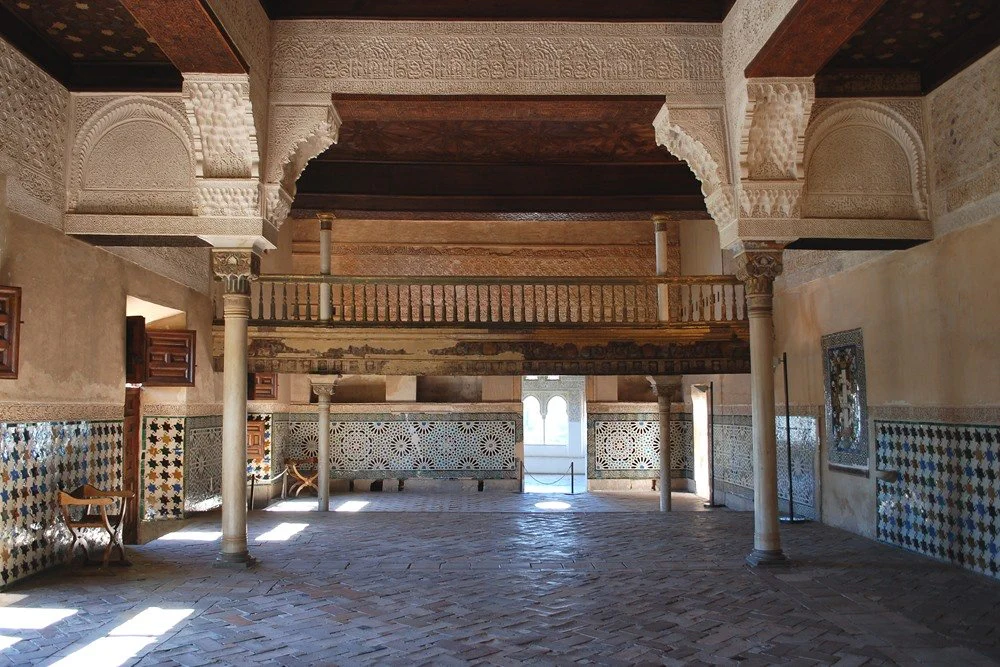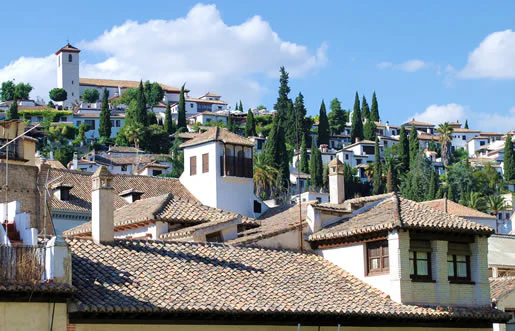The Mexuar
It is difficult to know how the Mexuar was originally built, as the multiple restorations and reconstructions carried out until today do not let us know how its chambers were. Some of them are just ruins today. According to the quotations by the poet Ibn Zamrak, it could be said that it belonged to the original Nasrid palaces. The layout and connections of the Mexuar have changed a lot as a result of the improvements carried out by the Catholics and of the great damages caused by the explosion of a powder magazine in 1590. The eastern section still survives from the series of chambers located next to the Tower of Mohammed I.That section is now known as «Mexuar» and it also underwent the Christian rebuildings. The gallery and the Machuca Tower (Torre de Machuca) are still in good condition. This tower is so called because the architects Pedro and Luis Machuca lived there during the construction of the Charles V Palace (Palacio de Carlos V).
As an example of what has been said, it may be mentioned that the exterior of the walls of the Mexuar Hall have undergone so many changes that it is impossible to know how they were originally built. Four columns stand in the middle of the hall, with corbels of mocarabes. The following text appears on the plaster frieze: «Everything that you own comes from God». The ceiling, from the Christian period, is a coffered ceiling with interlacing decoration. The wall, on its higher part is decorated with plasterwork, golden elements and paintings. The skirting boards are covered with tiles and have Alamares' motto, Charles V coat of arms and Mendoza's arms because Mister Iñigo López de Mendoza, Count of Tendilla was appointed as the governor of the fortress by the Catholic Monarchs. There are also some boards with the columns of Hercules and a border of Moorish bows from the 16th century.
At the back of the hall there is a chamber which was used by the king for the meetings with the council and to grant audiences. When the king was not in the palace, it was the Judge (Cadí), in the next hall, who met the traders. On the door, one of the tiles of the wall says: «Enter and fear not ask to ask for justice, for you will find it». Later, around the year 1632, these halls were turned into a Christian chapel and a choir was built.
Read more about...



